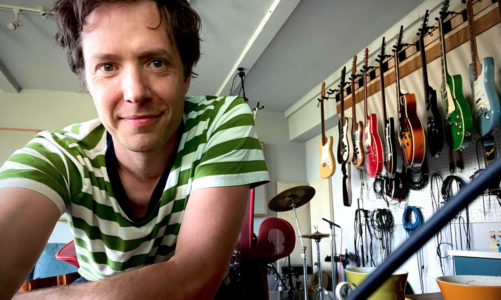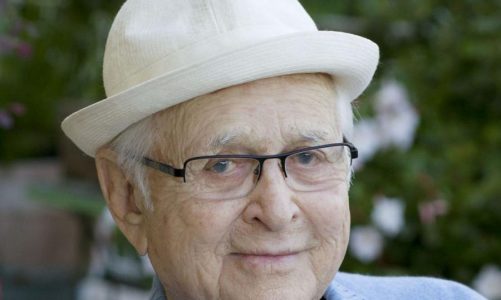
Lilia Olefir is the Director of Smoke Free Partnership, a coalition of over fifty NGOs that work on policy analysis and advocacy within the European Union. She has held leadership positions in tobacco control and advocacy at both the international level in Belgium and the national level in Ukraine. Lilia has a Master’s in Public Health in Management of Organizations from Kyiv National University of Kyiv Mohyla Academy and has worked in tobacco control and advocacy since 2015. In this interview, we discuss her experience working in tobacco control and advocacy, how tobacco legislation works in the European Union, and what steps are being taken to reduce the prevalence of smoking in European countries.
Mekenna Ledbetter: What inspired you to get involved in tobacco control and advocacy?
Lilila Olefir: I started working in tobacco control in Ukraine when I was doing my master’s in public health at Kyiv National University of Kyiv Mohyla Academy. We were supposed to do an internship over the summer and a friend of mine at the time was working for a tobacco control organization called LIFE. And I thought to myself, well, why not tobacco control? That makes sense. So I had a two-month internship there. When I was done, they had a part-time assistant position open. I applied and got the job. Later I was promoted to coordinator and then the director of the organization in Ukraine.
LIFE was funded by Campaign for Tobacco-Free Kids. Ukraine is a low-middle-income country and there is no funding for certain issues. Tobacco control is one of them. And we know that tobacco is still the single most preventable cause of death. So it didn’t quite make sense. But working in tobacco control allows you to learn a lot about advocacy, about policy, what works, what doesn’t, and how to see a change to policy through.
LIFE is one of Smoke Free Partnership’s coalition partners and I used to attend their annual coalition meetings. Last year, I started working at Smoke Free Partnership and in September I was appointed as the Director.
Can you tell me more about what your current organization, Smoke Free Partnership does?
Smoke Free Partnership is a coalition and we have over fifty partners from many European countries. We are an advocacy-oriented civil society organization that works at the European Union (EU) level. We respond to consultations and calls for feedback that are announced by the European Commission, and contribute to every step of the policy process that the Commission does.
At the same time, we work with our partners at the member states level and at the national level, to provide them with evidence to support their national advocacy campaigns and priorities. In the end, they are the ones that can champion the process because the member states are the ones that enforce the laws. For example, the Tobacco Tax Directive is adopted by the council and then by each member state directly. So working with the member states and our coalition partners is our way to make sure that we have a consensus that we agree on what our priorities are, what we want to achieve, and how we can do it.
It is challenging in many senses because there are many issues that we have as a society overall. So it’s always hard to get attention. But the idea is to make sure that our message is heard by the decision-makers, by the media, and by the general public, because we know that people support tobacco control legislation. Parents don’t want their kids to smoke. Many smokers want to quit and wish they never started. It’s possible to quit, but it’s not that easy and the more tobacco control measures we have in place, the easier it is for smokers to quit.
In 2021, I moved to France from California and was shocked by the number of people that still smoke in public places. Why is the prevalence of smoking still high in many European countries?
First, it is a matter of perception. If smoking is allowed in public places, we are more likely to see people smoking. Also, if I am not mistaken, in the United States tobacco legislation can vary from state to state. California has some of the most advanced tobacco legislation. California is very, very limited, so you see less smoking there. This is what I was referring to, our perception, what we see.
In Europe, the smoking prevalence is relatively high, but it has decreased over the years. The last survey, which was done in 2021, showed that the prevalence of smoking decreased. So it is decreasing. But we would like it to decrease faster.
Overall, we know that tobacco control works when all the measures are in place. These include smoke-free bans, 100% smoke-free in all indoor places as well as outdoor public places where other people are exposed. Right now at the EU level, the council’s recommendation for smoke-free environments is being revised.
Would you mind explaining how the tobacco legislation recommendation process works in the European Union?
The European Commission adopts directives and sets tobacco regulations and recommendations for all member states in the European Union. The implementation of directives is mandatory while the council’s recommendations provide guidance but are not mandatory. For example, the current Tobacco Tax Directive sets the minimum excise tax for tobacco products which member states must meet. However, some member states such as France and others, have much higher minimum excise than, let’s say, Bulgaria or well, some other countries. So there is a lot of discrepancy between the member states. Europe is not quite homogeneous in that sense.
Which recommendations are subject to change and when will they be revised?
There are several legislative revisions coming up. We are now in one of the more intense periods of that. First, we have the council’s recommendations for smoke-free environments. It’s scheduled for Q3 of this year. So hopefully by the end of this year or the beginning of next year, we will have new recommendations because the current one is from 2009.
Next, we have the Tobacco Tax Directive that sets the excise tax for tobacco products. It was scheduled to be presented last year in December but it was postponed again. We are anticipating that the proposal will be presented this year. The delays are mostly due to tobacco industry interference and not enough political will, but it will for sure be revised in the next few years. If not this year, next year, or in the coming year, because it’s time.
Then there are the Tobacco Products and Tobacco Advertising Directives. Now they are at the stage of being reviewed. The commission has announced consultations. Consultations mean that organizations who work on tobacco control, and public health, but as well, you know, business stakeholders, can submit answers to questionnaires. The questionnaires are to assess and evaluate how the current directive is being implemented, what the weaknesses and loopholes are, what needs to be improved, and what other challenges the current directive does not address. There has already been a shift, tobacco products have evolved, and there are new challenges to address. We anticipate that the proposal on the revision of the Tobacco Products and Tobacco Advertising Directives might be presented in 2025 to 2026, and that will take a couple of years for it to be negotiated, adopted, and then enter into force.
How does the European Commission encourage member states to implement council recommendations? Why not mandate the recommendations?
The EU can regulate by adopting directives, regulations, and recommendations but the member states should decide for themselves. It allows for us to have champions such as Ireland go ahead and fully implement more measures and they are not just strictly limited. The goal of the EU legislation is to make sure that there are minimum standards set. Then champions can drive the progress and then others can follow them. At some point, those changes that they are making will become the minimum requirement.
Of course, progress depends on the specific legislation and the fact that the tobacco industry quite often interferes with the policymaking process. Tobacco industry interference remains the biggest obstacle to complete and full implementation of tobacco control. And the industry is making sure that, well… The basic strategies and tactics are to delay and weaken the legislation.
The issue with tobacco industry interference is not just in Europe. It is all over the world. I have been working in Ukraine, and we’ve been working with Campaigns for Tobacco-Free Kids in other low and middle-income countries. It is the same for Asia. It is the same for Africa. Their tobacco industries are even more aggressive because more mature states can better protect themselves from the interference and pressure of the tobacco industry.
So all the loopholes within tobacco legislation are mostly due to tobacco industry interference in the policy-making process and then lobbying at the national level, at the EU level. So that’s why we are not as advanced as we would like to be.
What new policies do you think will help reduce smoking in Europe?
All the tobacco control measures work together. We need a revision of recommendations for smoke-free environments. We know from experience that it will generate better protection from secondhand smoke than the tobacco tax directive increase of minimum rates. Also, closing the gap between the excise on cigarettes and roll your own to limit the product substitution and then also capturing the new and emerging products. These all need to be included in the scope of the new directive. The issue of affordability also needs to be readdressed over time so that the excise will be increased every couple of years to catch up with inflation and other changes. Then there are additional regulations on tobacco products, meaning hopefully plain packaging soon and then a complete ban on flavorings.
However, whenever any law is adopted, the tobacco industry always looks for loopholes. And it’s not just in Europe but all over the world. So we have to catch up.
We can look at the example of New Zealand, which recently passed a law banning smoking in future generations; which seemed crazy at first, but really isn’t anymore. Back in 2012, when Australia was the first country to pass legislation on plain packaging, it also felt insane. It took years before the court made a decision and then the tobacco industry sued other countries in Europe that passed legislation on plain packaging too. But nowadays it is not crazy. It is something that more and more countries will be adopting. And I believe the same will apply to banning sales to kids born in certain years. The goal is to protect kids and make sure that they are not targeted by the tobacco industry. Global data shows that people try tobacco and start using it regularly when they are kids. And of course, nicotine is very addictive.
What steps are being taken to reduce the prevalence of smoking in Europe?
We have Europe’s Beating Cancer Plan. It is quite an ambitious plan. It’s about prevention and one of the main goals of the plan is to reduce the smoking prevalence to 5% by 2040.
We are taking steps forward to make sure that kids are not getting addicted. It’s as straightforward as that. I mean, we have so many problems in the world to tackle that are very challenging. But with tobacco, it’s relatively easy.
Tobacco control is quite unique because we have the World Health Organization Framework Convention on Tobacco Control, the UN treaty that was ratified by almost every country in the world. So there is this global consensus that it has to be stopped. The tobacco industry produces a product, and if used as intended, the product kills. It is addictive. It’s a legal drug in some sense. It is about the profit for them, nothing else.
We are not inventing the wheel, but at the same time, we are working against a very powerful and rich industry. We are working against big tobacco. It is a little bit like David and Goliath. It can be especially frustrating when you have the evidence, but there is this mystical political wheel that is sometimes not there. So, even in 2023, it’s not a done deal like it might be mistakenly considered. The tobacco industry is still here and they are reversing positive changes and postponing legislation, at the EU level.
What keeps you motivated to continue advocating for tobacco control in the EU?
I think experience helps a little bit because we know that you have to be patient and persistent. Data and research available about people who work for nonprofits find that they are more prone to burnout. They are working hard for a cause, they’re motivated, and they care. It is challenging when you don’t see results after investing so much of your time and resources. It’s important to remind ourselves, my team, and the people with whom I work, that it is a process. We should anticipate that any policy change can take several years.
You have to mentally prepare yourself to win a war, not just a battle. It is important. Sometimes you have to lose in order to win. I mean it is in some way a philosophy of advocacy that it will not happen just like that. We are working against a very powerful industry and for some reason, they don’t want to go out of business. They don’t want a smoke-free future like they claim. Instead, they could just stop selling cigarettes and move into another industry. This is always the conversation. But instead of doing that, they keep pushing a harmful product.
*This interview has been edited for length and clarity.




